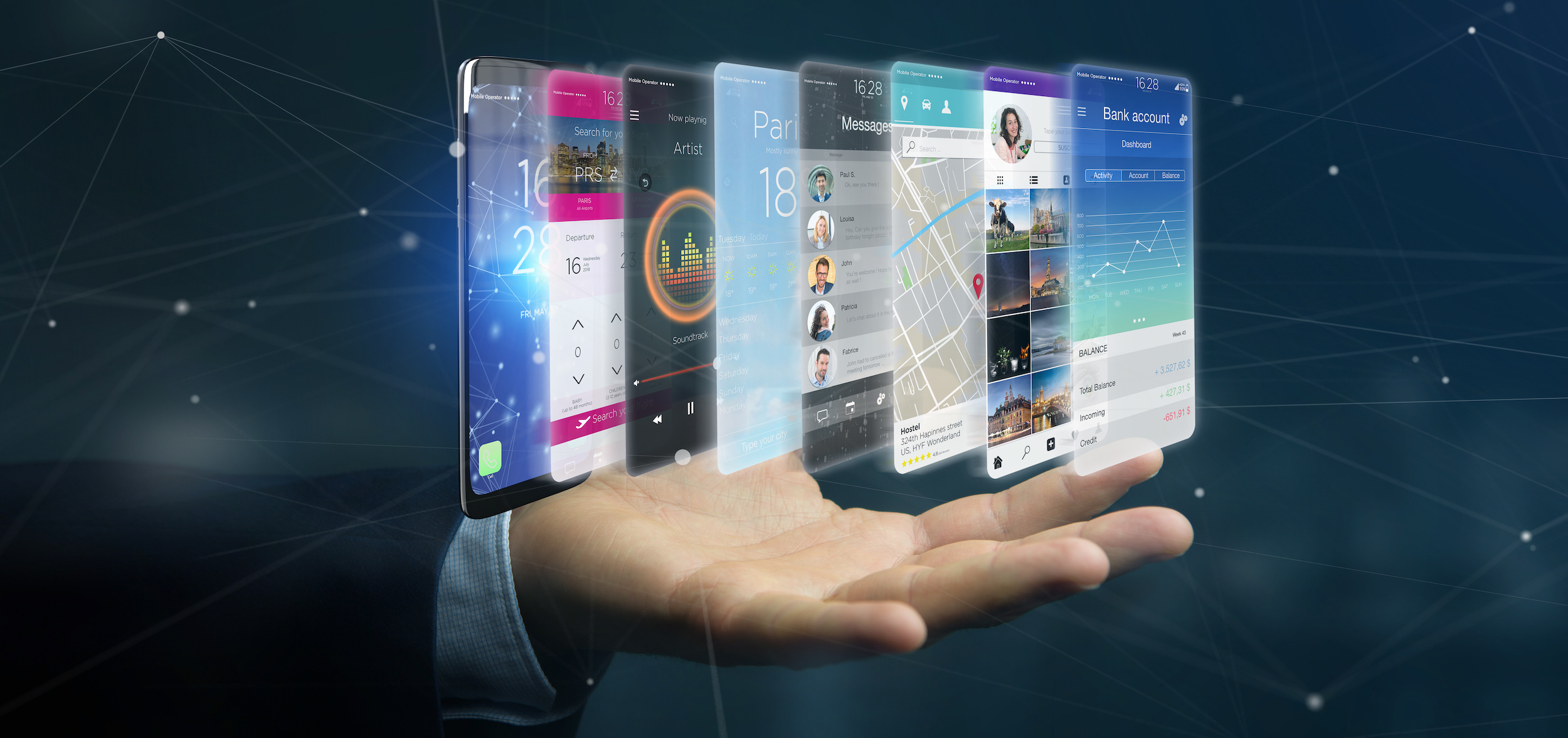Cellular data use is the crux of any cell phone plan, with the amount of data required by mobile applications, streaming, and general internet use on the rise. This is especially evident in the wireless industry, where carriers offer increasingly large data packages as well as unlimited data plans. But how much data do you really need? This guide will help you decide.
What Activities Use the Least and Most Data? How Much Data Does Streaming Use? How Much Data Does Social Media Use? How to Limit Your Data Usage?
Updating your apps on cellular data can tack on a ton of data use each month
What Activities Use the Most Data?
A few smartphone activities stick out as the most data-heavy: video streaming, audio streaming, social media, and general web browsing. Every YouTube video viewed, podcast listened to, newsfeed scrolled, and Google search reviewed has its own consumption level. These activities can consume from 3MB/hour for basic online gaming to upwards of 7GB/hour for 4K video streaming (not recommended).
Application updates are another big data problem because they can reach upwards of 150MB apiece. If you’re updating your apps on cellular data, that can tack on a ton of data usage each month, especially if you use a lot of applications or auto-update the ones you don’t. We recommend performing this task over WiFi.
What Activities Use the Least Data?
Basic web browsing on your smartphone isn’t going to break the data bank, assuming you aren’t just watching videos on news sites all day. At 60MB/hour of data consumption, everyday browsing should only make a modest dent in your plan’s data allowance.
In addition, most online gaming (depending on the game) only costs 3MB/hour. Hearthstone only uses 400kb in 10 minutes. However, more intensive games like Pokémon Go, for example, can use about 90MB in a day.
How Much Data Does Video Streaming Use?
If you’re a heavy Netflix or YouTube streamer, you likely need an unlimited data plan. Netflix’s standard video setting runs 1GB/hour and its HD setting can range from 4-7GB/hour. On the other hand, YouTube playback quality can be customized completely from 240p all the way up to 4k video (not recommended when untethered from WiFi), giving more control to the user with data consumption from 240MB/hour upwards. Find an unlimited data plan that suits your needs with WhistleOut’s Comparison Tool.
| Video Streaming | Data Per Hour (range based on quality) |
| Netflix | 1GB – 7GB |
| YouTube | 100MB – 7GB |
How Much Data Does Music Streaming Use?
Music and podcast streaming uses far less data than video streaming, but it can still add up. Pandora radio can burn between 14.5 to 86.4MB an hour, while Spotify starts at 43MB/hour and can reach 144MB/hour. Hour-long podcasts average 60MB on average. If you’re a big audio streamer, we recommend a plan with at least 2GB to satisfy average smartphone use in addition to your content needs.
| Audio Streaming | Data Per Hour |
| Music Streaming and Podcasts | 50-70MB |
| Spotify | 43-144MB |
| Pandora | 14-86MB |
How Much Data Does Social Media Use?
Social media is video streaming and internet browsing all in one. While you casually scroll your newsfeed, like Instagram photos, and watch short videos, you’re burning through potentially significant cellular data. The averages listed in the table below vary widely, from 85MB for Facebook per hour to 720MB/hour for Instagram. The truth remains that social media can be just as unforgiving to your data as video streaming because it’s pretty much the same thing.
Social media can be just as unforgiving to your data as video streaming
| Social Media | Data Per Hour |
| 720MB | |
| 85MB | |
| Snapchat | 160MB |
Let’s Talk recommends at least 10GB plans for those accustomed to consuming social media content away from WiFi. Most people use several social media tools together (i.e. a little Facebook, Instagram, Snapchat, and Twitter at lunch), and all of that can add up. For the social media lover, plans ranging from 5GB to 10GB are your best bet.
Data Plans for Content Lovers
If you dabble in all of the aforementioned activities away from WiFi, you know exactly what you need to do—upgrade your data plan. After watching six movie trailers, listening to two episodes of Fresh Air, and scanning the all of the Kardashians’ Instagram stories, you may find that you’re over your allotted 5GB allowance and need more. Unlimited plans offer much more flexibility to cell phone users, while also coming with a variety of other benefits such as hotspot use, international talk and texting, and streaming subscription perks at a variety of price points.
Let’s Talk Editor’s Pick: Best Unlimited Plan for Heavy Data Use
How to Limit Your Data Usage
If you’ve done the math but think you can still budget data into a smaller plan, there are a few ways to keep a lid on your data consumption a month. In terms of video streaming, Netflix allows members to download episodes of their favorite TV shows and movies for later viewing without WiFi or cellular connection. In addition, most music and video streaming applications allow you to lower audio quality settings to lessen the impact on your data.
Another tip is to make sure your apps download updates on “WiFi-only” and to use WiFi wherever possible. It’s certainly not the most stress-free way to live, but it’s definitely the most frugal in terms of data use.














